SEO Content Strategy Demystified: Coursera, MasterClass, and edX
How online courses providers shape their sites and content to appeal to the Google algorithm.
According to SEMrush, Coursera, edX, Udemy and MasterClass get $40 million worth of traffic from Google in the US every month1. This means they’re getting half a billion dollars worth of free marketing from Google every year. Despite having raised more than a billion dollars combined, even these providers can’t afford to pay that much.
| SEMrush | Ahrefs | SpyFu | SimilarWeba | |
| Coursera | 11.1M | 7.8M | 3M | 13.7M (23.75%) |
| edX | 4.1M | 3.9M | 1M | 3.75M (25%) |
| MasterClass | 21.9M | 2.8M | 6.8M | 6.61M (71.85%) |
| Class Central | 550.5K | 437.6K | 317k | 1.3M (63%) |
a. In parentheses: estimated fraction of traffic coming from search engines.
Google’s role in the success of an online education provider cannot be overstated. Running Class Central for a decade, this is a lesson I’ve repeatedly been reminded about. We’ve too often been subjected to the whims of Google’s algorithm, causing anxiety or delight.

Last year, I noticed a sudden and significant drop in Class Central traffic from Google due to its algorithm changes. It happened in two phases: a smaller drop in June and a larger drop in July, as you can see above.
Basically within a one-month period, Class Central saw its traffic from Google reduced by 40+%. The decline continued, and we eventually were down 50+%.
I also noticed a decline in 2U’s enrollments for Q3 and Q4, which caused its stock to drop below the edX purchase price of $800 million.
For this reason, online course providers of all sizes use different SEO or Search Engine Optimization strategies. In this article, I’ll highlight the top strategies of highly successful providers: Coursera, edX, and MasterClass.
A couple of months ago, we explored another aspect of digital marketing by analyzing 60 online course providers using the open-source privacy inspector Blacklight.
Although this article isn’t geared toward experienced marketers, one of Class Central’s goals is understanding and deconstructing the online education business. To this end, we’ve written about the evolution of Coursera’s monetization, we’ve investigated bootcamps and their business model, and in our annual end-of-year analyses, we’ve put the online course ecosystem and its main actors under the magnifying glass.
Class Central’s goal is to make online education work for everyone, and writing about chutneys and naan won’t take us any closer to that goal.
I’m no SEO expert (and frankly, I don’t want to be one), but I’ve built Class Central from scratch: starting at zero and now reaching 40 million impressions a month on Google. And through this lens, I’ve observed other education companies, many started after Class Central.
At the end of the article, I’ll also explain Class Central’s SEO strategy (or lack thereof).
Finally, if you want to learn more on the subject, we built a ranking of the best SEO courses available online. And here are 3200 Digital Marketing Courses taught by universities and institutions around the world.
What is Search Engine Optimization (SEO)?
Simply put, SEO is creating and designing web pages that show up high on search engines — in particular, on Google. A good example are recipe websites. Have you ever wondered why recipe pages are unnecessarily long, with the actual recipe hidden at the bottom?
This is because these pages were specifically written for Google’s algorithm. Google considers longer articles to be “higher quality”. As you keep scrolling to find the recipe, it also increases the “time on site”, another signal Google uses.
Class Central’s strategy is to focus on what learners like us would want and then do it in an SEO friendly way.
SEO Content Strategy
In this article, I define “SEO content strategy” as the strategy that involves creating pages specifically designed for Google’s algorithm. Often, these pages wouldn’t even exist if it weren’t for the need to be in Google’s good graces.
In fact, often these pages can’t even be reached by navigating the website. They only appear in Google searches.
| Total Pages | Total Courses | |
|---|---|---|
| Coursera | 716,000 | 12,000 |
| edX | 52,000 | 4,500 |
| MasterClass | 7,160 | 150 |
In the case of online providers, the number of pages should be proportional to the number of courses. But as you can see above, this isn’t true at all.
The disparity between these numbers is due to each provider’s SEO content strategy. Basically, the more pages you have, the more keywords you cover, the more traffic you get. In many cases, each page is translated into multiple languages, further increasing the number of pages.
Coursera’s SEO Content Strategy: Automated Pages
Coursera automatically creates two kinds of pages:
- Lecture Pages — 11.3M
- Search Results Pages — 1.46M
Lecture Pages: 11.3M in Total
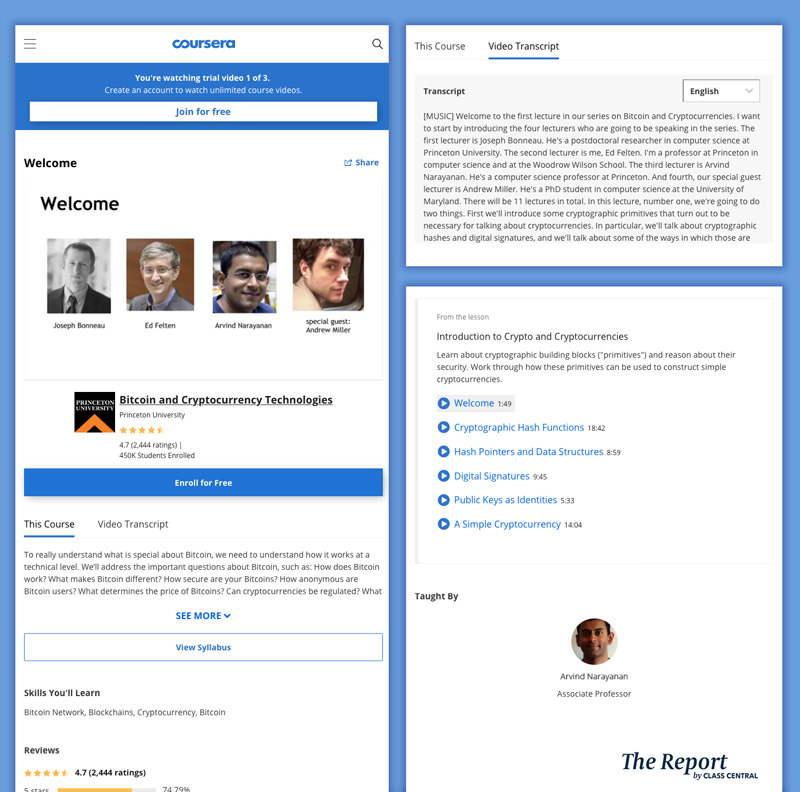
Of all the strategies that I’ll talk about, I like this one the best — in particular because it increases the amount of quality content openly available.
Coursera’s primary product is online courses from top universities around the world, and this content strategy leverages that.
Basically, Coursera exposes its lectures to the open web. These also include the course syllabus and video transcript, thereby generating text that makes each page unique (in the eyes of Google).
Like on some news sites, Coursera uses a sign-up wall: users can watch up to three videos before having to sign up.
You can find all these pages by searching “site:coursera.org/lecture/” on Google or by visiting Coursera’s directory. The number of results on Google is higher than the number of pages in the directory. That’s probably because Coursera also creates separate subdomains for different languages — for example es.coursera.org.
Search Results Pages: 1.46M in Total
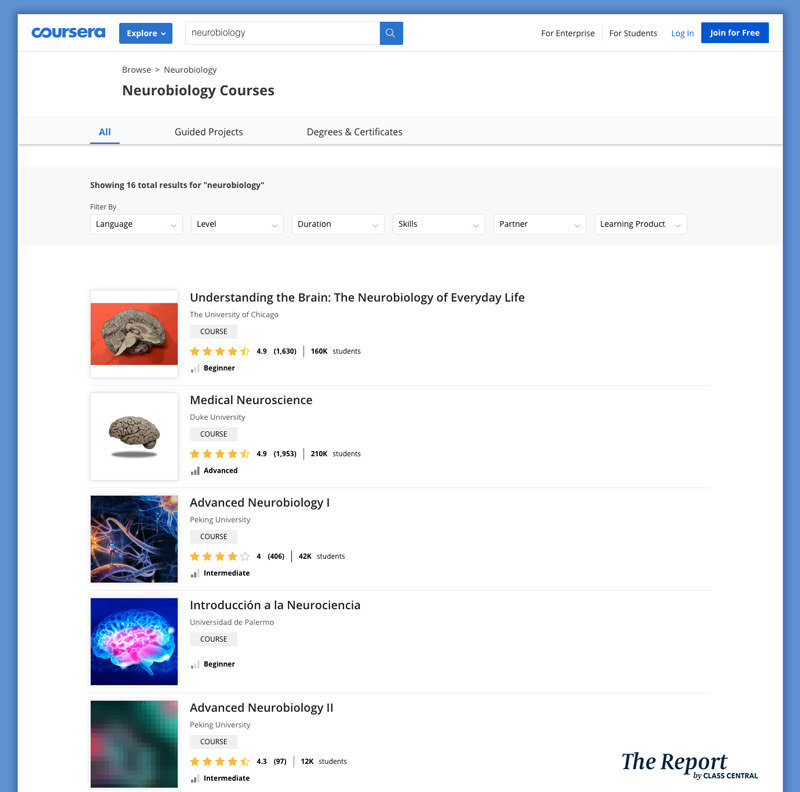
Coursera has compiled a list of target keywords. For each keyword, they’ve submitted a page to Google with relevant Coursera content. This page is basically the result of searching for that keyword on Coursera.
You can find all these pages by searching “site:coursera.org/courses” on Google or by visiting Coursera’s directory.
EdX’s SEO Content Strategy: Topic Pages
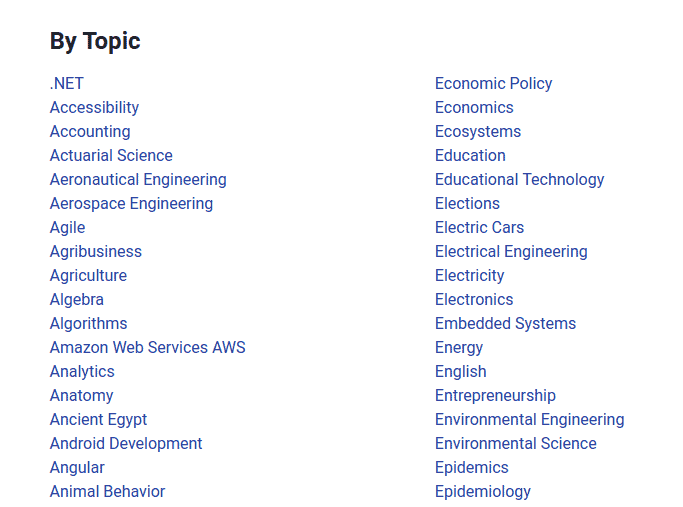
edX has created over 700 topic pages. Their goal is to rank high when internet users search the topic and the keyword “courses”. For instance, algorithms courses, finance courses, and psychology courses all have dedicated pages on edX.

The anatomy of an edX topic page is as follows:
- Title: The topic followed by “courses” — for instance, “Agile courses.”
- Description: For some topics, the description is custom. For others, it’s a formula — for instance: “Take free online Agile courses to build your skills and advance your career.” You can replace “Agile” with any topic.
- Related: Internal links are an important signal for Google. If you ever see long footers with lots of links, this is why.
- Courses: Many topic pages have no courses. Presumably, these existed once, but are no longer part of edX’s catalog.
- FAQ: These include common questions about the topic, such as “What Is Agile?” and “What Are The Benefits of Agile?”. In the Agile page, the section is almost 500 words long. Writing it is time-consuming, but it captures a wide breadth of keywords.
You can find all these pages by searching “site:edx.org/learn” on Google or by visiting edX’s sitemap.
MasterClass SEO Content Strategy: Engineered Content (for Google)
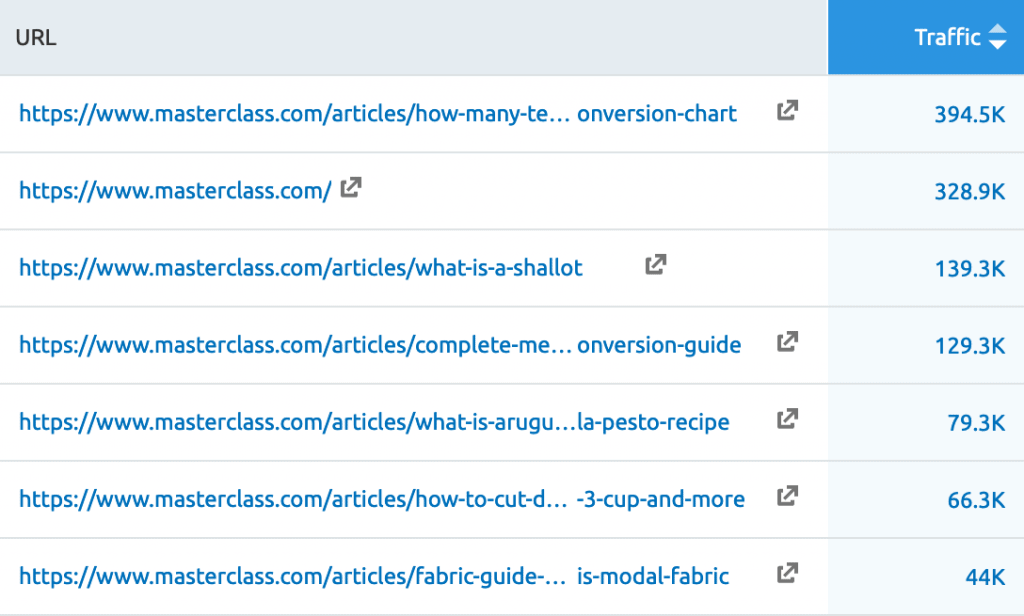
This strategy involves figuring out what people search for and writing articles to target those searches.
Using tools like SEMrush or Ahrefs, you can come up with a list of potential keywords and rank them by volume. Then, you can hire content writers to write ad hoc articles in a way that Google likes.
This is the most common SEO-driven strategy. Personally, I think it makes the open web worse for everyone except for those trying to monetize it! Instead of finding high-quality resources, you end up on articles written by digital marketers or content writers who generally don’t have any expertise in the topic.
Let’s take a look at an example. When I search “chutney” on Google, the first result is an article written by MasterClass. According to SEMrush, this article receives 24K visitors every month. The article doesn’t mention who wrote it — it just says “Written by MasterClass.”
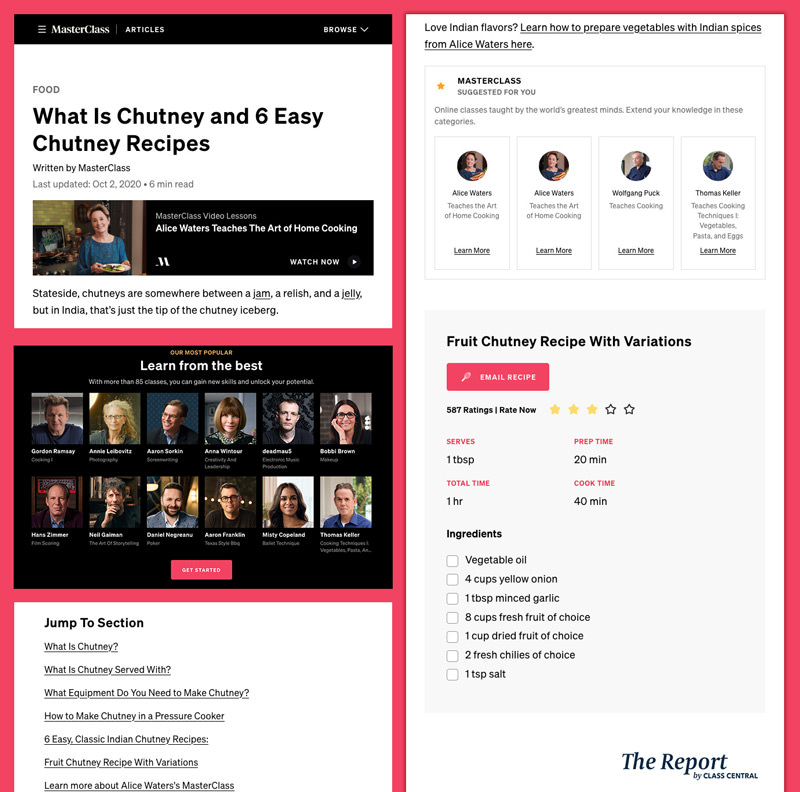
Throughout the article, MasterClass promotes its platform and cooking courses. To put it lightly, none of these courses are taught by people who grew up in a place where chutney originated. The article also links to other MasterClass articles related to India: Indian cuisine, basmati rice, naan, and curry dishes.
Conveniently, all these articles appear to have been recently updated, though they may not have changed since they were first published. This is another tactic to make Google think the article is fresh, as Google favors recent articles.
Currently, MasterClass has about 13,000 articles. You can find them all here.
Class Central’s SEO Strategy

You can consider Class Central a Tripadvisor for online education. We have a catalog of 100,000 online courses from close to 1,000 universities. Our users have written over 200,000 reviews.
Two thirds of our users on Class Central come via Google. So SEO is important for us. But not important enough to build our product and content to exclusively cater to Google’s algorithms.
I started Class Central back in 2011 as a side project to help me keep track of Stanford’s free online courses. And Class Central’s small team also consists of learners who have done hundreds of online courses, including online degrees. We like to think of Class Central as a platform built for learners by learners.
So our strategy is to focus on what learners like us would want and then do it in an SEO friendly way.
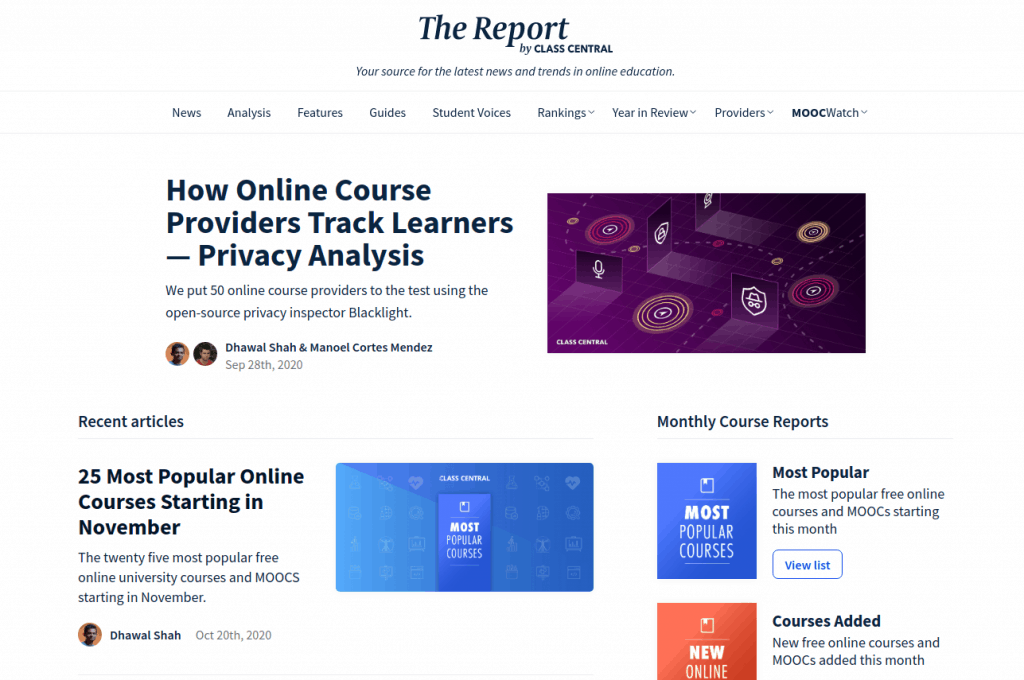
A good example of this is The Report, Class Central’s publication, where we write about online education news and analysis. Since its beginnings, it has received over 16.5 million pageviews.
But pageviews are just one metric. An appropriate SEO strategy can easily inflate these numbers and attract users who are not even looking for your product. And it can also make your platform brittle: Google’s algorithm changes slightly, and all your efforts go waste.
By publishing original analyses and unique authoritative content, we avoid that fate, as shown by my Google Scholar profile page which boasts over 1500 citations.
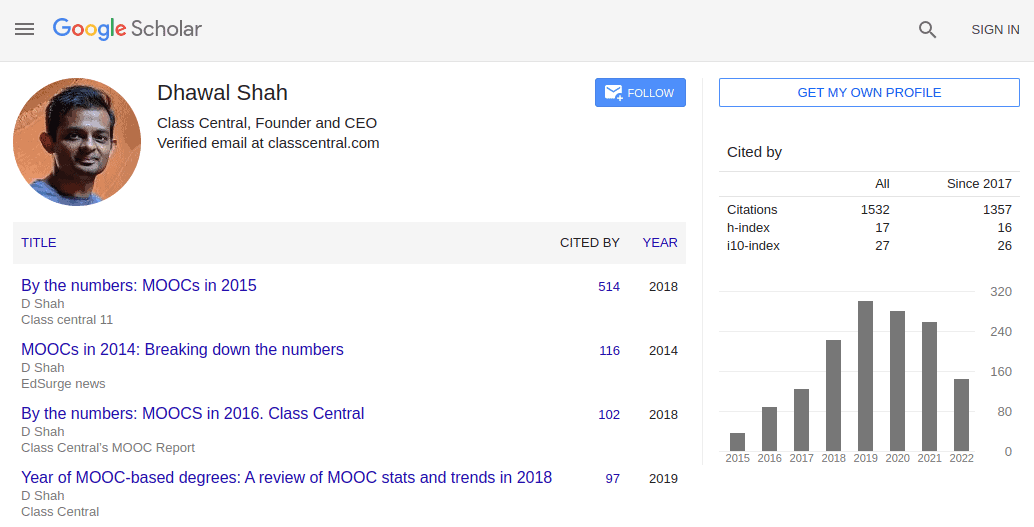
This strategy has its limits. It’s hard to scale quickly, since there is no single repeatable formula. It’s also difficult to write unique authoritative content, since it requires you to be an actual authority.
Pre-pandemic, some of Class Central’s competitors who focused exclusively on SEO were catching up to us (even though we started years before them).
But during the pandemic, being a high-quality resource led over 15 million people to turn to Class Central to find online courses. Class Central was featured in The New York Times and I was interviewed by CNBC and Yahoo! Finance.
Class Central’s goal is to make online education work for everyone, and writing about chutneys and naan won’t take us any closer to that goal.
References
- This is the amount they’d need to spend on Google Ads to get the same traffic.








Cosmin Mesenschi
Wow… I completely understand you Dhawal, I have been thinking the same thing about creating content on actual first-hand direct experience on some products instead of some copywriters that never tried that specific online course.. always thought how can they know about that if they never tried it before?
I do like your strategy about SEO, writing for the users rather than only for google as you will get higher returns in the future.
I believe you did a splendid work building this fantastic website, thank you and keep going!